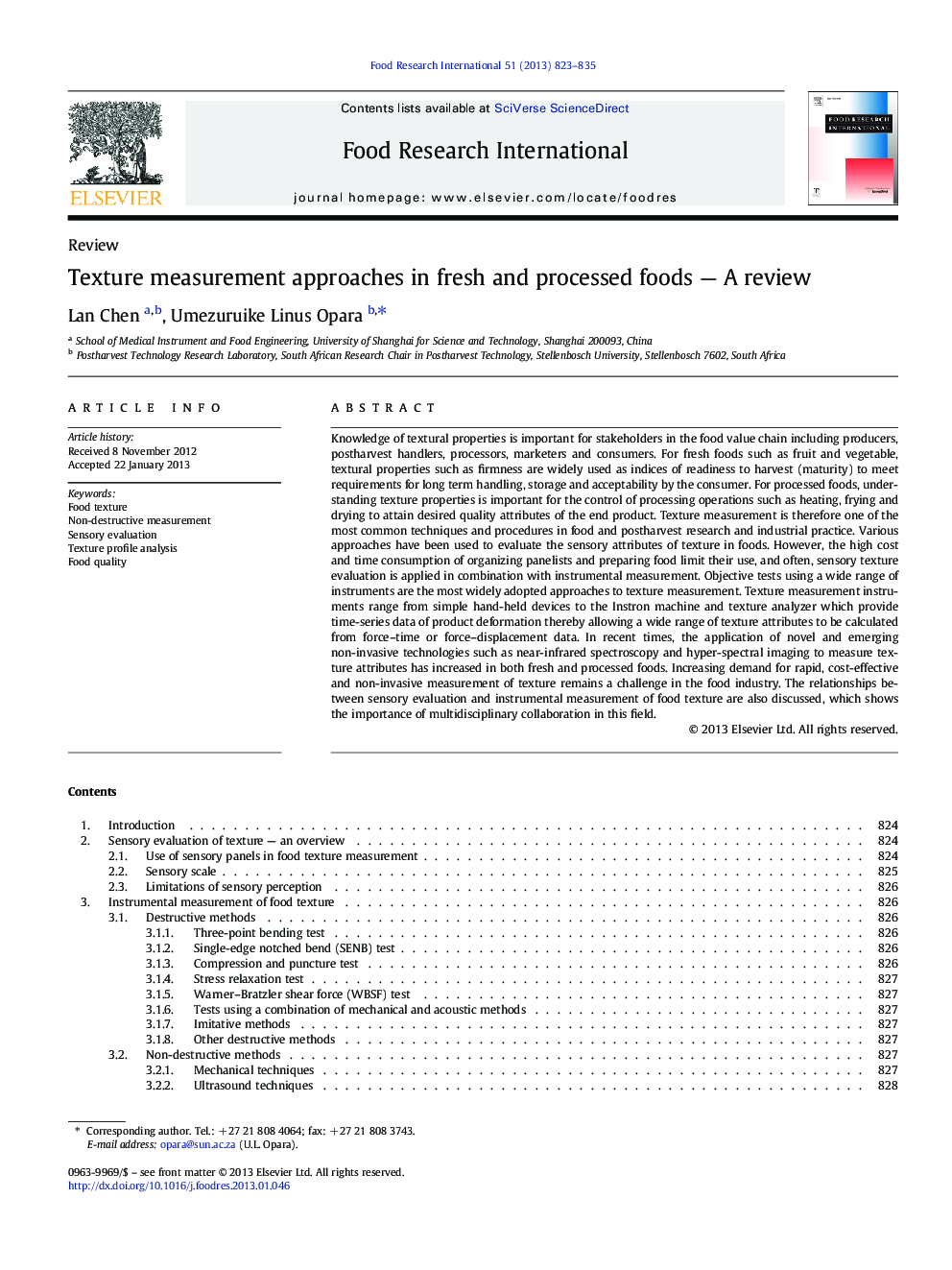| کد مقاله | کد نشریه | سال انتشار | مقاله انگلیسی | نسخه تمام متن |
|---|---|---|---|---|
| 6397983 | 1330680 | 2013 | 13 صفحه PDF | دانلود رایگان |

Knowledge of textural properties is important for stakeholders in the food value chain including producers, postharvest handlers, processors, marketers and consumers. For fresh foods such as fruit and vegetable, textural properties such as firmness are widely used as indices of readiness to harvest (maturity) to meet requirements for long term handling, storage and acceptability by the consumer. For processed foods, understanding texture properties is important for the control of processing operations such as heating, frying and drying to attain desired quality attributes of the end product. Texture measurement is therefore one of the most common techniques and procedures in food and postharvest research and industrial practice. Various approaches have been used to evaluate the sensory attributes of texture in foods. However, the high cost and time consumption of organizing panelists and preparing food limit their use, and often, sensory texture evaluation is applied in combination with instrumental measurement. Objective tests using a wide range of instruments are the most widely adopted approaches to texture measurement. Texture measurement instruments range from simple hand-held devices to the Instron machine and texture analyzer which provide time-series data of product deformation thereby allowing a wide range of texture attributes to be calculated from force-time or force-displacement data. In recent times, the application of novel and emerging non-invasive technologies such as near-infrared spectroscopy and hyper-spectral imaging to measure texture attributes has increased in both fresh and processed foods. Increasing demand for rapid, cost-effective and non-invasive measurement of texture remains a challenge in the food industry. The relationships between sensory evaluation and instrumental measurement of food texture are also discussed, which shows the importance of multidisciplinary collaboration in this field.
⺠Applications of sensory analysis in food texture are reviewed. ⺠Destructive and non-destructive approaches to food texture are presented. ⺠Mechanical testing instruments used to measure food texture are reviewed. ⺠Relationships between sensory and instrumental measurement are discussed.
Journal: Food Research International - Volume 51, Issue 2, May 2013, Pages 823-835